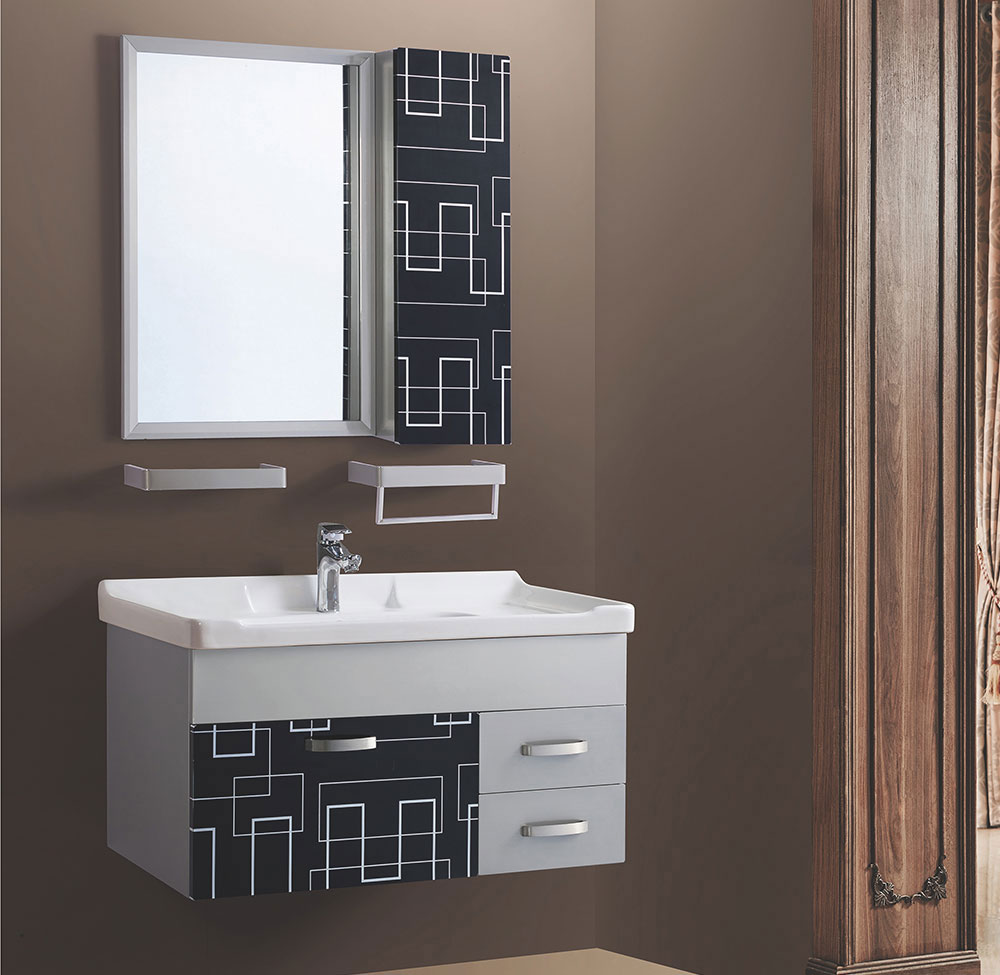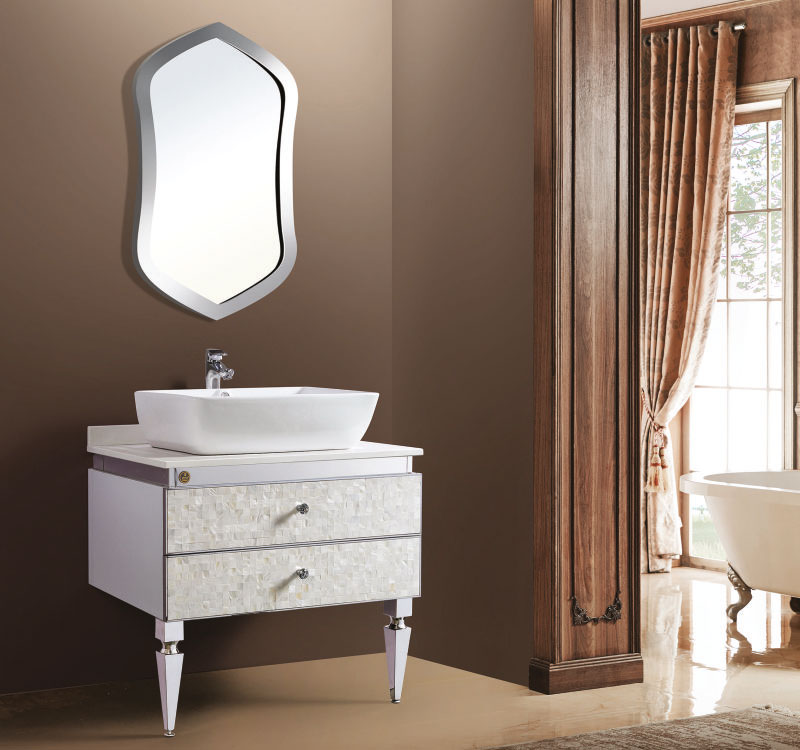The Bombay Style Bathroom Vanity

The Bombay style bathroom vanity is a timeless classic that has captured the hearts of homeowners for decades. It’s known for its intricate carvings, rich dark wood, and elegant design, offering a unique blend of traditional Indian craftsmanship and modern functionality. This article delves into the history, characteristics, and enduring appeal of the Bombay style bathroom vanity.
The History and Origins of the Bombay Style Bathroom Vanity
The Bombay style, also known as the “Indo-Saracenic” style, emerged in the 19th century during the British colonial era in India. This design aesthetic drew inspiration from various architectural and decorative influences, including Mughal, Gothic, and Victorian styles. The Bombay style was characterized by its elaborate carvings, often featuring floral motifs, geometric patterns, and mythical creatures.
The popularity of the Bombay style spread beyond India, reaching Europe and America. This led to the creation of furniture pieces, including bathroom vanities, that incorporated the distinctive features of the style.
Key Characteristics of the Bombay Style Bathroom Vanity
Bombay style bathroom vanities are easily recognizable due to their distinctive characteristics:
- Intricate Carvings: The most prominent feature of Bombay style bathroom vanities is their intricate carvings. These carvings can range from delicate floral patterns to elaborate scenes depicting mythical creatures or historical events.
- Dark Wood: Bombay style vanities are typically crafted from rich dark woods such as teak, rosewood, or mahogany. These woods contribute to the vanity’s luxurious appearance and durability.
- Ornate Hardware: The hardware used on Bombay style vanities often complements the intricate carvings. This can include brass or silver handles, knobs, and hinges that add a touch of elegance to the design.
- Detailed Designs: The design of Bombay style bathroom vanities often incorporates traditional Indian motifs, such as the paisley pattern, the lotus flower, or the peacock feather. These motifs add a touch of cultural richness to the vanity.
Examples of Famous Bombay Style Bathroom Vanities
While specific examples of famous Bombay style bathroom vanities might be hard to find, due to the nature of the style being more about design principles than specific pieces, there are many examples of famous Bombay-style furniture that can give us a glimpse into the design aesthetic.
- The Taj Mahal Palace Hotel in Mumbai: This iconic hotel is a prime example of Indo-Saracenic architecture, featuring intricate carvings and rich dark wood throughout its interiors. The hotel’s furniture, including its bathroom vanities, exemplifies the Bombay style.
- The Victoria Memorial in Kolkata: This grand marble building, dedicated to Queen Victoria, showcases the Bombay style’s blend of architectural influences. The building’s intricate carvings and decorative elements can be seen in the furniture and fixtures inside, including the bathroom vanities.
Why Bombay Style Bathroom Vanities Are Still Popular Today
The Bombay style bathroom vanity continues to be popular for several reasons:
- Timeless Elegance: The intricate carvings, rich dark wood, and ornate hardware create a timeless elegance that never goes out of style.
- Unique Character: The Bombay style bathroom vanity adds a touch of unique character and personality to any bathroom.
- Cultural Richness: The design incorporates traditional Indian motifs, adding a layer of cultural richness and depth to the space.
- Durability: The use of high-quality materials like teak and rosewood ensures that Bombay style bathroom vanities are durable and long-lasting.
Materials and Craftsmanship: Bombay Style Bathroom Vanity

Bombay style bathroom vanities are known for their intricate designs and use of high-quality materials, reflecting the rich craftsmanship tradition of India. These vanities are often a blend of traditional techniques and modern sensibilities, creating a unique and elegant look.
Materials Used, Bombay style bathroom vanity
The choice of materials plays a crucial role in determining the aesthetics, durability, and overall character of a Bombay style bathroom vanity. Here’s a breakdown of commonly used materials:
- Wood: Mango wood, teak wood, and sheesham wood are popular choices for Bombay style vanities. These woods are known for their durability, rich grain patterns, and ability to be carved intricately. Mango wood, in particular, is favored for its affordability and sustainability.
- Metal: Brass, iron, and copper are often incorporated into Bombay style vanities for decorative accents, hardware, and structural elements. Brass is particularly popular for its warm golden hue and its ability to withstand moisture and wear. Iron and copper can add a rustic or industrial touch.
- Stone: Marble, granite, and sandstone are often used for vanity tops and sinks in Bombay style bathroom vanities. These natural stones add elegance and durability. Marble is known for its luxurious veining, while granite is prized for its strength and resistance to scratches and stains. Sandstone offers a more rustic and earthy aesthetic.
Traditional Craftsmanship Techniques
Bombay style bathroom vanities are often handcrafted using traditional techniques that have been passed down through generations of artisans. These techniques contribute to the unique character and intricate details of these vanities.
- Carving: Intricate carvings are a hallmark of Bombay style vanities. Skilled artisans use hand tools to create intricate designs on the wood, often depicting floral motifs, geometric patterns, or traditional Indian themes.
- Inlay Work: Inlay work involves embedding pieces of different materials, such as wood, bone, or metal, into the surface of the wood to create decorative patterns. This technique is often used to add intricate details and visual interest to Bombay style vanities.
- Hand Painting: Hand-painted designs, often featuring vibrant colors and intricate patterns, can be seen on Bombay style vanities. These designs can range from traditional Indian motifs to contemporary abstract patterns.
Wood Finishes and Inlays
Bombay style bathroom vanities showcase a wide variety of wood finishes and inlays, adding to their aesthetic appeal.
- Finishes: Popular finishes include natural oil finishes, wax finishes, and lacquer finishes. Natural oil finishes enhance the wood’s natural beauty while providing a protective layer. Wax finishes offer a warm sheen and a protective layer. Lacquer finishes provide a durable and glossy finish.
- Inlays: Common inlay materials include bone, mother-of-pearl, brass, and wood of contrasting colors. These materials are carefully cut and inserted into the wood to create intricate patterns and designs.
Durability and Maintenance
The durability and maintenance requirements of a Bombay style bathroom vanity depend largely on the materials used.
- Wood: Wood vanities require regular cleaning and protection from moisture. Applying a sealant or oil finish can help protect the wood from water damage.
- Metal: Metal accents, especially brass, can tarnish over time. Regular cleaning with a brass polish can help maintain their shine.
- Stone: Stone countertops and sinks are generally durable and easy to maintain. They should be cleaned with a mild cleaner and sealed periodically to prevent staining.
Design Elements and Features

The Bombay style bathroom vanity is characterized by its intricate details and luxurious aesthetic, evoking the grandeur and opulence of colonial India. These vanities are more than just functional pieces; they are statement pieces that elevate the bathroom into a space of elegance and refinement.
Key Design Elements
The distinctive features of a Bombay style bathroom vanity include:
- Intricate Carvings: The vanities often feature elaborate carvings on the doors, drawers, and frame. These carvings can depict floral motifs, geometric patterns, or even scenes from Indian mythology. The carvings are typically hand-crafted, adding to the unique character of each vanity.
- Ornate Hardware: The hardware used on Bombay style vanities is equally intricate. Knobs, pulls, and hinges are often made of brass, bronze, or silver, and feature detailed designs that complement the carvings. The use of such materials adds a touch of luxury and sophistication to the vanity.
- Detailed Molding: The vanities often incorporate detailed molding on the frame and doors, further enhancing their visual appeal. This molding can be carved, painted, or gilded, creating a sense of depth and dimension.
Layout and Functionality
Bombay style bathroom vanities are designed to be both functional and aesthetically pleasing. They typically include:
- Storage Compartments: The vanities often feature a combination of drawers, shelves, and cabinets to provide ample storage space for toiletries, towels, and other bathroom essentials. The storage compartments are typically concealed behind intricately carved doors, maintaining the vanity’s elegant aesthetic.
- Double Sinks: Many Bombay style bathroom vanities feature double sinks, ideal for larger bathrooms or families. The sinks are often made of porcelain or ceramic, with decorative details that complement the vanity’s overall design.
- Countertop Space: The vanities offer ample countertop space for placing toiletries, decorative items, and even a small plant, adding a touch of life to the bathroom.
Decorative Elements
Bombay style vanities are often adorned with decorative elements that further enhance their luxurious appeal. These include:
- Mirrors: The vanities are often paired with large, ornate mirrors that complement the vanity’s intricate carvings and hardware. These mirrors can feature elaborate frames, etched designs, or even be made of antique glass.
- Sconces: Sconces are often used to illuminate the vanity, adding a touch of elegance and ambiance. The sconces can be made of brass, bronze, or silver, and feature designs that complement the vanity’s overall aesthetic.
- Decorative Hardware: The hardware used on Bombay style vanities is not only functional but also decorative. Knobs, pulls, and hinges are often made of brass, bronze, or silver, and feature detailed designs that complement the carvings.
Color and Pattern
The color palette for Bombay style bathroom vanities typically includes rich, warm tones, such as mahogany, walnut, and cherry. These colors create a sense of warmth and sophistication. The vanities can be painted, stained, or lacquered, adding depth and dimension to their appearance. Patterns are often used to enhance the vanity’s aesthetic appeal. These patterns can include floral motifs, geometric designs, or even intricate scenes from Indian mythology. The patterns are typically hand-painted or carved into the wood, adding a unique touch to each vanity.